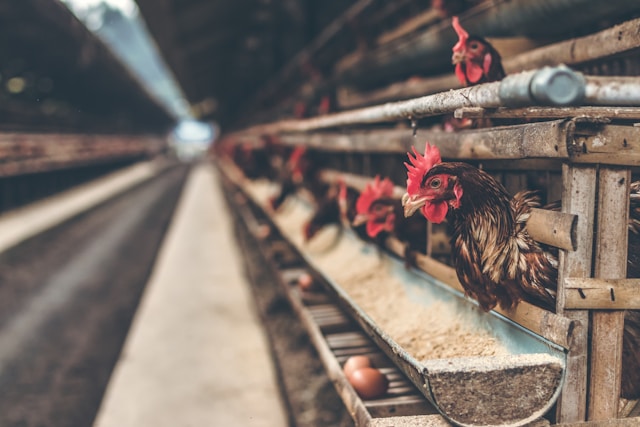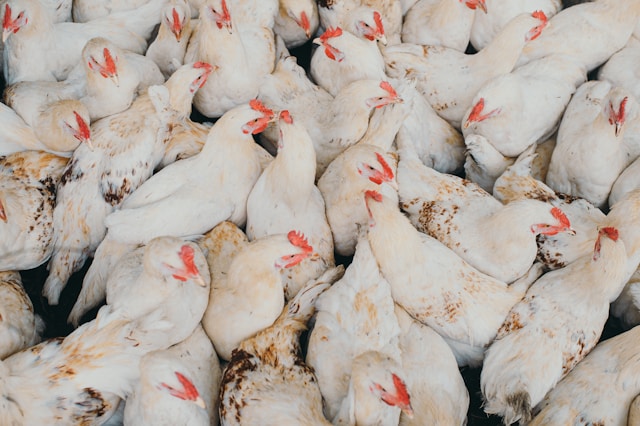Introduction: The Backbone of Brazil’s Poultry Powerhouse
Brazil’s poultry industry is one of the most powerful and dynamic in the world. While global headlines often celebrate the success of large integrators like BRF and JBS, the real strength of Brazil’s poultry economy lies deeper — in the thousands of small and medium poultry producers in Brazil who form the foundation of this billion-dollar export sector.
From family farms in Paraná to small cooperatives in Santa Catarina, these producers raise millions of birds every year, supporting local economies and contributing significantly to Brazil’s position as the world’s largest exporter of chicken meat. Yet, behind this success story lie significant challenges — rising costs, market pressures, and the constant demand for innovation and sustainability.
In this article, we’ll explore the growth trajectory, challenges, and future outlook for small and medium poultry producers in Brazil, while linking to key industry products and insights from Brazil Poultry.

1. The Growing Role of Small & Medium Poultry Producers in Brazil
Over the past two decades, small and medium poultry producers in Brazil have evolved from traditional backyard farms into highly efficient, semi-integrated businesses. Supported by cooperatives and regional programs, these producers are responsible for a significant share of domestic chicken supply and play an essential role in maintaining export volumes.
According to industry estimates, nearly 60% of Brazil’s poultry farms are considered small or medium-sized. These producers often supply to major processors that export frozen poultry products such as Frozen Chicken and ready-to-cook meat products.
The Brazilian poultry sector’s inclusive structure ensures that even smaller farmers can benefit from global trade through contracts, partnerships, and access to feed and veterinary support.
2. Why Small and Medium Producers Matter
The importance of small and medium poultry producers in Brazil extends beyond production numbers. They play a vital role in:
-
Rural employment – providing jobs to millions across Brazil’s southern and central regions.
-
Food security – ensuring affordable chicken supply to domestic markets.
-
Regional development – stimulating local economies through feed supply, transport, and equipment maintenance.
In addition, many of these producers are embracing diversified livestock strategies, producing other meats such as Frozen Beef and Frozen Pork, adding resilience to their operations.
Their entrepreneurial approach contributes to Brazil’s strong reputation as a multi-protein exporter, providing reliable meat products to over 150 countries.
3. Growth Drivers for Brazil’s Poultry SMEs
Despite global economic fluctuations, small and medium poultry producers in Brazil have shown steady growth, thanks to several key factors:
a. Technological Adoption
Modern poultry farms are leveraging automation in feeding systems, climate control, and health monitoring. This has significantly improved productivity per bird, reduced waste, and improved biosecurity.
b. Cooperative Networks
Brazil’s cooperative model — especially in states like Paraná, Santa Catarina, and Rio Grande do Sul — enables smaller producers to pool resources, gain access to credit, and collectively market their products.
Cooperatives like Aurora and Copacol have become major industry players, representing the success of collaboration among small farms.
c. Global Demand for Brazilian Chicken
Brazil’s reputation for high-quality, disease-free chicken has fueled export growth. Many small and medium poultry producers in Brazil are linked to exporters through contract farming systems, supplying birds that end up in premium export products like Frozen Chicken.
d. Sustainability and Animal Welfare
Sustainability isn’t just a trend — it’s becoming a requirement. Small farms are increasingly investing in renewable energy, organic feed, and efficient waste management to meet international standards.
4. The Challenges Facing Small and Medium Poultry Producers in Brazil
While growth is evident, small and medium poultry producers in Brazil face several critical challenges that threaten their long-term competitiveness.
a. Rising Production Costs
Feed accounts for nearly 70% of production expenses, and fluctuating corn and soybean prices have hit smaller producers particularly hard. Unlike large integrators, small farms often lack the bargaining power to negotiate lower feed prices.
b. Biosecurity Threats
Outbreaks of avian influenza and other poultry diseases pose serious risks. Small producers often struggle with the cost of upgrading facilities to meet stricter biosecurity requirements.
The Brazilian government and industry associations are working to support small farmers through education and financing programs, but compliance remains uneven.
c. Market Volatility
Export demand can fluctuate rapidly due to global trade tensions or health-related bans. Small and medium producers, heavily reliant on intermediaries, are more exposed to price instability.
d. Access to Credit and Infrastructure
Limited access to affordable financing and outdated infrastructure — from rural roads to cold storage — hinder scalability. This restricts the ability of small and medium poultry producers in Brazil to expand or modernize their operations.

5. The Human Side of Poultry Production
Behind every farm is a family or community dedicated to raising birds ethically and efficiently. Visiting poultry farms in the Brazilian countryside reveals how much passion and discipline goes into daily operations.
Farmers wake up before dawn to monitor climate systems, feed schedules, and animal welfare. Their livelihood depends on producing high-quality, healthy chicken — the same kind you can find in export-grade products from Brazil Poultry.
The resilience and adaptability of these farmers embody the spirit of Brazil’s agricultural success story.
6. Government and Institutional Support
Recognizing their importance, the Brazilian government has implemented policies to strengthen small and medium poultry producers in Brazil. Initiatives like subsidized loans, training programs, and cooperative incentives are helping to bridge the gap between smallholders and industrial-scale farms.
Programs by MAPA (Ministry of Agriculture, Livestock and Food Supply) and Sebrae provide technical assistance and digital transformation support to rural entrepreneurs. These efforts aim to improve efficiency, biosecurity, and sustainability in small poultry farms.
7. Sustainability and Future Prospects
The global market increasingly demands sustainable meat products. Small and medium poultry producers in Brazil are responding by adopting eco-friendly practices — from using solar energy to recycling water and utilizing poultry litter as fertilizer.
Sustainability gives these producers a marketing advantage, helping them tap into premium markets in Europe and Asia. Moreover, integrating poultry with cattle or pork farming — through operations like Frozen Pork and Frozen Beef production — helps reduce waste and create a circular economy.
8. Technology, Digital Tools, and Traceability
The future of poultry production is digital. From blockchain-based traceability to IoT sensors in poultry houses, technology is transforming how producers manage and market their operations.
Brazil’s small and medium producers are increasingly investing in data systems that ensure traceability — a major selling point for exports. Buyers worldwide want to know where their meat comes from, how it was raised, and under what conditions.
By adopting these technologies, small and medium poultry producers in Brazil are enhancing transparency and building trust with consumers and importers.
9. Case Studies: Local Success Stories
Case 1: Family Farm in Paraná
A third-generation poultry farm in western Paraná expanded from 20,000 to 100,000 birds by joining a cooperative. Through shared logistics and bulk purchasing, they cut feed costs by 15% and improved export access.
Case 2: Small Producer in Goiás
A farmer in Goiás adopted solar panels and energy-efficient lighting, reducing operating costs by 25%. The investment paid for itself in less than three years, illustrating the value of sustainability for small and medium poultry producers in Brazil.
10. Opportunities Ahead
Despite global uncertainties, the outlook for small and medium poultry producers in Brazil remains optimistic. Export markets in Asia and Africa are expanding, while domestic consumption continues to rise due to chicken’s affordability and nutritional value.
Producers who focus on efficiency, diversification, and sustainability will remain competitive. Integrating multiple proteins — such as Frozen Chicken, Frozen Beef, and Frozen Pork — allows for more stable revenue streams.
Conclusion: A Resilient Future for Brazil’s Poultry Producers
The journey of small and medium poultry producers in Brazil is a testament to resilience, innovation, and community spirit. They’ve weathered market crises, disease outbreaks, and logistical challenges — yet continue to thrive and support Brazil’s position as a global poultry leader.
With ongoing investments in sustainability, technology, and cooperative models, these producers will remain essential to the country’s food security and export strength.
For more insights into Brazil’s poultry industry and to explore high-quality products for export and wholesale, visit Brazil Poultry — your trusted partner in global meat supply.

